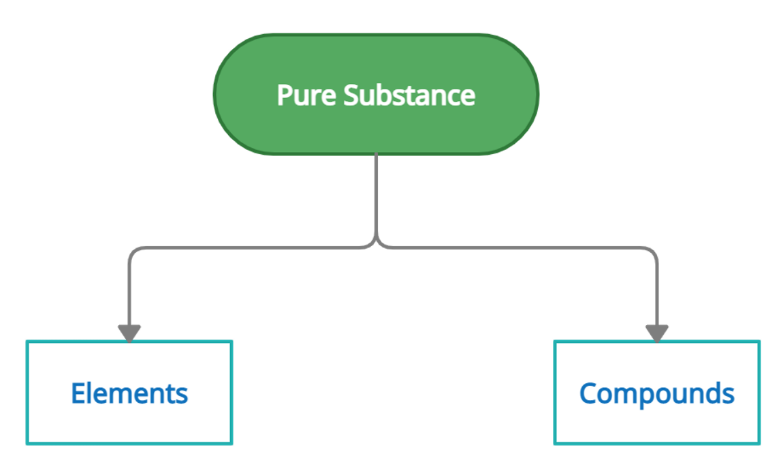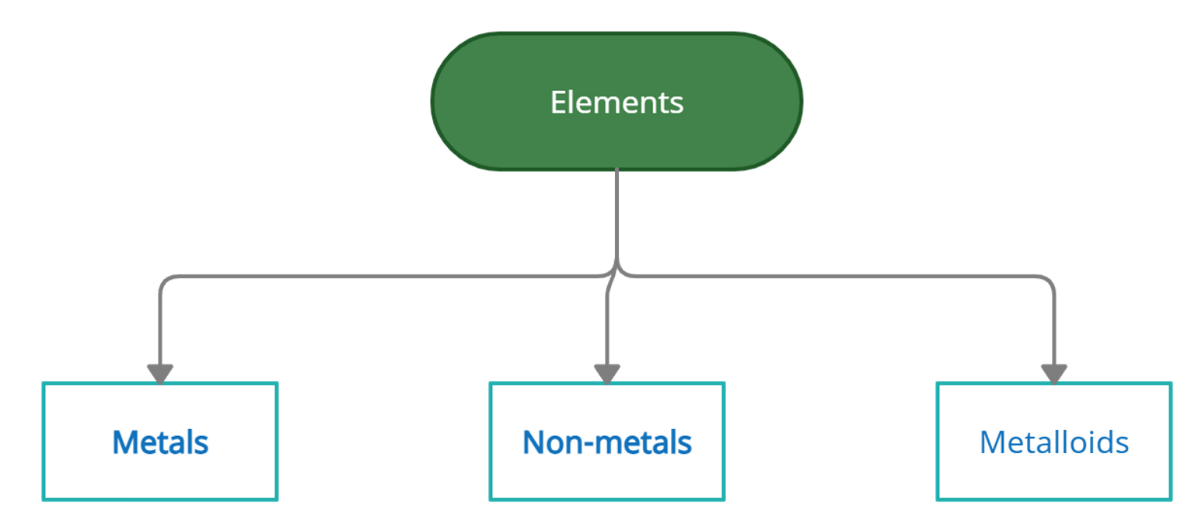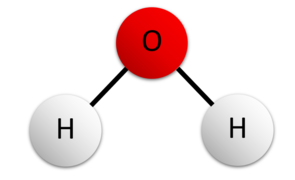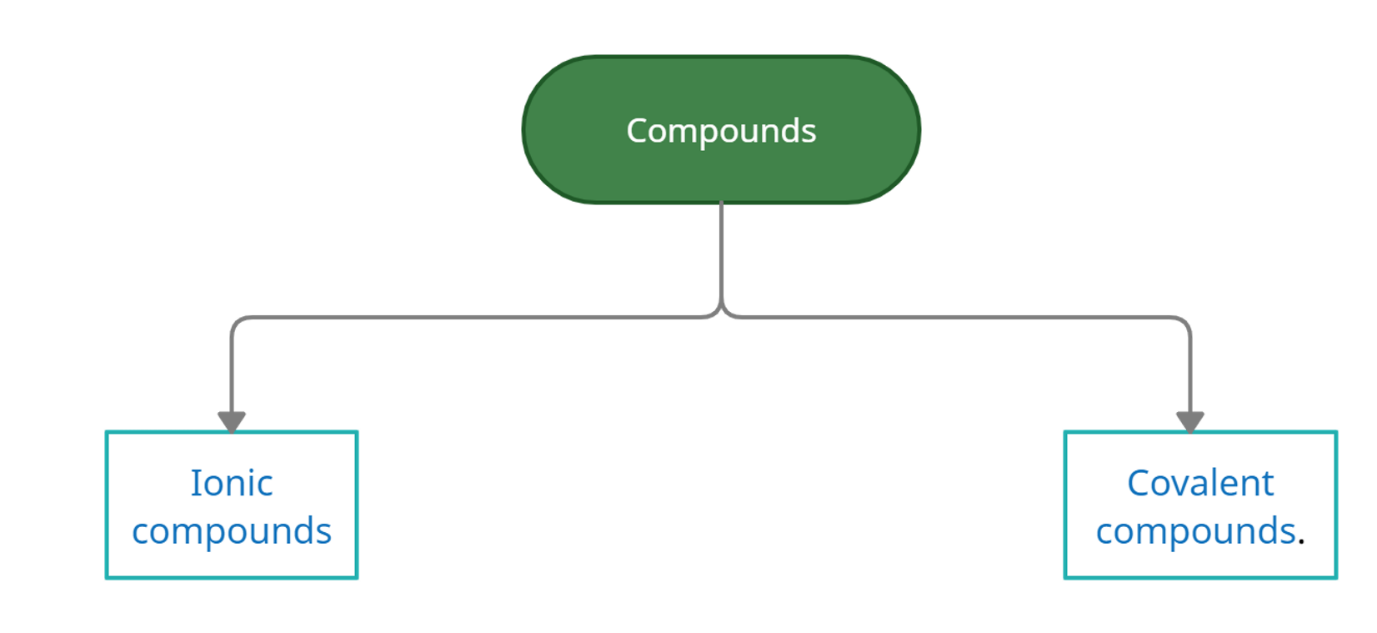Elements and Compounds - Definition, Example, Types, Classification, FAQs
Classification of Matter:
Chemistry is the study of different types and properties of matter. We see different types of components and materials all around us. It is therefore essential to classify and categorize them so that they can study, analyze and understand their characteristics easily of elements compounds, and mixtures. The matter around us can be classified as pure matter and impure matter. Those with fixed chemical composition are pure substances. A pure substance is divided into elements and compounds. Since impure substances are substances that may have different compositions and therefore do not have any fixed characteristics thus, they can't be divided into elements and compounds.

Also check-
What is an Element?
A substance that cannot be broken down into simpler components using chemical methods or A substance composed of atoms with one atomic number is called an Element. An element meaning is a complete chemical substance that constitutes an entry in the modern periodic table. Elements and compounds are made up of only one type of atom and two or more elements and compounds respectively. They cannot be broken down into simpler fragments and can exist in the form of atoms or molecules. The elements are represented by symbols, issued by IUPAC. For example, Hydrogen is represented by H, Nitrogen is represented by N, and so on.
Examples of Elements:
Below we have listed 10 examples of elements,
Element | Symbol |
Hydrogen | H |
Helium | He |
Lithium | Li |
Beryllium | Be |
Boron | B |
Carbon | C |
Nitrogen | N |
Oxygen | O |
Fluorine | F |
Neon | Ne |
Related Topics Link |
Types of Elements:
Elements are classified into metals, non-metals, and semi-metals according to their properties.

Metals: Metals are the electro positivity elements that tend to lose electrons in order to achieve stability. Metals have physical characteristics such as hardness, high stresses, lusters, conductivity, high melting and boiling points, etc.
Examples: Iron (Fe), Sodium (Na), Calcium (Ca), Lead (Pb), etc.
Non-metals: Non-metals are the elements that tend to get electrons, i.e. they are electron-negative. They are not metals. Non-metallic physical properties include fragility, comparatively less strength of the tensile materials, brightness, non-conductivity or isolation, lower melting and boiling points, etc.
Example: Hydrogen (H), Chlorine (Cl), Iodine (I), Phosphorus (P), etc.
Metalloids: Metalloids are elements with properties between metals and nonmetals.
Example: Boron (B), Germanium (Ge), Silicon (Si), etc.
Read more :
What is a Compound?
We know that compound definition is a pure substance. Also, the compound definition in chemistry is when two or more elements are chemically combined in a fixed weight ratio, the resulting product is a compound. A compound can be defined as a substance composed of two or more different types of elements in a fixed atomic ratio or A compound is made up of two or more atoms of different elements that are connected to each other. Some individual attributes of the element are lost, and the newly formed connection acquires new attributes. Now questions arise: what is a compound in Chemistry? It is a compound represented by its chemical formula. The chemical formula is a symbolic representation of the atomic ratio constituting a specific compound. For example, water H2O is a compound. Here we can see that Water is made up of two hydrogen atoms and one oxygen atom ( Look into the below image).

Examples of Compounds:
Below we have listed 10 examples of compounds,
Compound | Formula |
Water | H2O |
Sulphuric Acid | H2SO4 |
Alcohol | C2H4O |
Common Salt | NaCl |
Nitrous oxide | N2O |
Carbon Dioxide | CO2 |
Glucose | C6H12O6 |
Ammonia | NH3 |
Acetic Acid | C2H4O2 |
Copper sulphate | CuSO4 |
Someone may ask, How many compounds are there? More than 350,000 compounds (including chemical mixtures) are registered for production and use worldwide. Also what is an element in chemistry it is a compound that can be transformed into another chemical substance by a chemical reaction with a second substance.
NCERT Chemistry Notes :
Types of compounds:
Compounds can be categorized as ionic and covalent compounds on the basis of formation.

Ionic Compound: Between metal and non-metal, ionic compounds are formed. They are also known as electrovalent ion compounds. The metal atom is cation-forming and the non-metal atom is forming an anion. Electrons are anions.
Examples: sodium chloride, calcium oxide, etc.
Covalent compound: Between two non-metals covalent compounds are formed. It is also known as a molecular compound. The electrons are formed by the sharing of two or more nonmetals.
Example: water, carbon dioxide, methane, sugar, etc.
Also read -